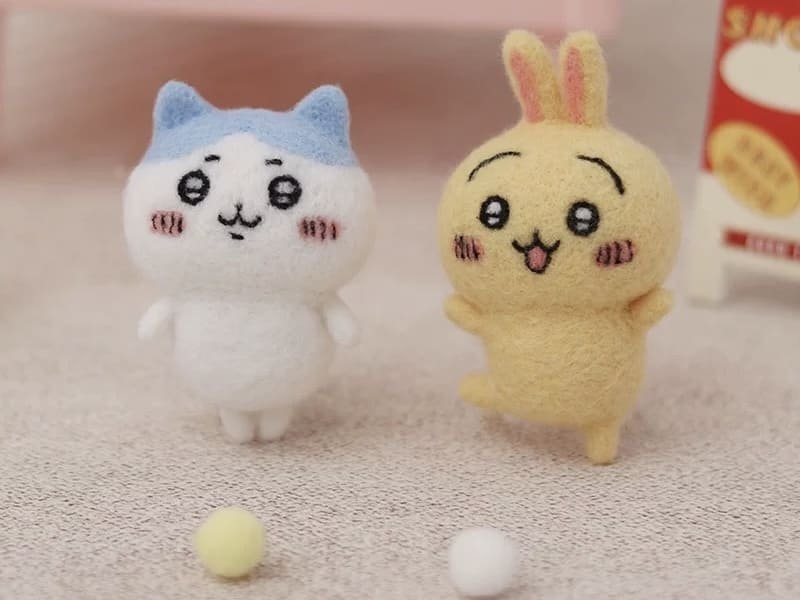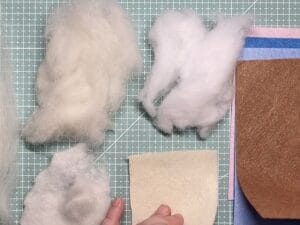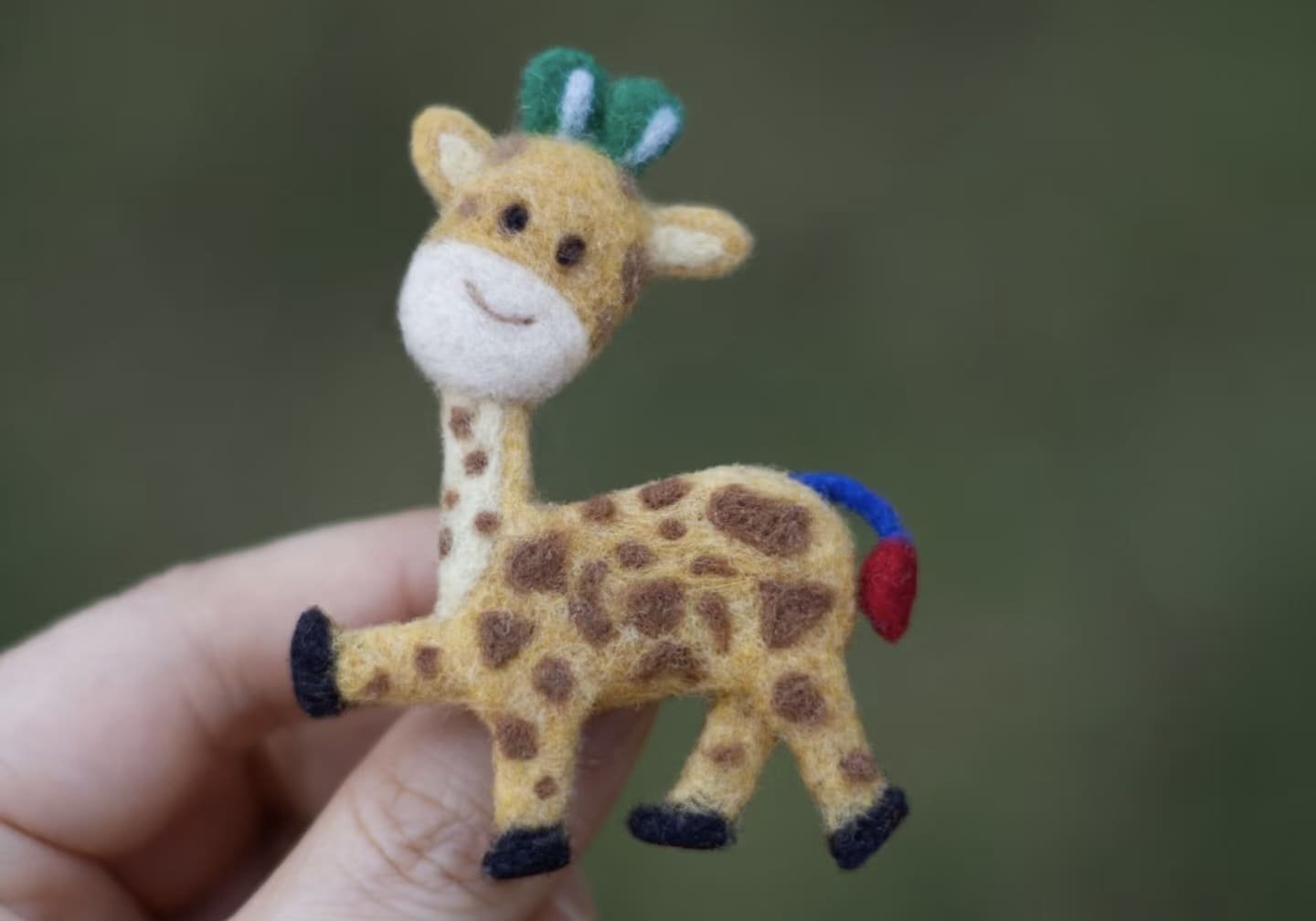NEEDLE FELTING FAQS
Can you needle felt wool?
When it comes to needle felting, wool is not just the primary material—it’s the ideal one. This fascinating craft involves using barbed needles to interlock wool fibers, transforming them into dense, sculpted forms. Wool’s unique structure and natural properties make it exceptionally well-suited for needle felting, allowing artists and hobbyists to create everything from delicate details to sturdy, three-dimensional figures.

How Needle Felting Works
At its core, needle felting is a simple yet ingenious process. It relies on specialized needles equipped with tiny barbs along their shafts. As these needles repeatedly pierce the wool, the barbs catch and tangle the microscopic scales on the fibers’ surface. This continual agitation causes the fibers to interlock, gradually compressing the wool into a firm and cohesive form.
Unlike wet felting, which uses hot, soapy water to bind fibers together, needle felting is a dry technique. This allows for greater precision, making it perfect for sculpting intricate shapes and adding fine details.

Why Wool Is Perfect for Needle Felting
Wool’s natural characteristics make it the best fiber for needle felting. The presence of scales on each fiber helps the barbs of the felting needle grip and interlock them effectively. However, not all wool behaves the same way—different breeds produce fibers with distinct felting properties:
- Romney Wool: Felts quickly and holds its shape well, making it ideal for sculptural work.
- Merino Wool: Incredibly soft and fine, perfect for adding delicate details.
- Corriedale Wool: Felts easily and is great for beginners due to its forgiving texture.
- Shetland and Jacob Wools: Each brings unique textures and qualities to needle felting projects.
While sheep’s wool is the most common choice, other animal fibers—such as alpaca, camel, yak, cashmere, mohair, angora, and llama—can also be needle felted, offering diverse textures and aesthetics. However, some processed wools, like Superwash wool, are chemically treated to prevent felting and are unsuitable for this craft.

Essential Tools for Needle Felting
To start needle felting, a few key tools are necessary:
- Felting Needles: These specialized needles come in various gauges, with lower gauges being thicker for faster felting and higher gauges being finer for intricate details.
- Wool Roving or Batting: This refers to cleaned, carded wool that’s easy to work with.
- Felting Surface: A foam pad or wool mat protects both the needle and the work surface.
While not essential, additional tools can enhance the experience:
- Finger protectors or gloves to prevent accidental needle pricks.
- Needle holders for a more comfortable grip, especially during extended projects.
- Multi-needle tools to speed up felting on larger areas.
- Embellishments like glass eyes or wire armatures for adding details.

Basic Needle Felting Techniques
The needle felting process begins with shaping a small amount of wool roving or batting into a basic form. The felting needle is then used to repeatedly stab the wool, always inserting and pulling it out at the same angle to avoid breakage. As the fibers interlock, the shape becomes firmer and more compact.
For larger projects or detailed features, additional layers of wool can be added and gradually worked into the base. Turning and rotating the piece regularly ensures even compression and a well-formed shape.
Creative Possibilities with Needle Felting
Needle felting offers endless creative opportunities, from decorative embellishments to functional items:
- Two-Dimensional Art: Create wool paintings, add texture to fabric, or embellish clothing.
- Sculptural Creations: Craft animals, dolls, figurines, and lifelike miniatures.
- Practical Items: Make wool dryer balls, pincushions, coasters, and mug warmers.
- Accessories & Jewelry: Design unique brooches, keychains, charms, and hair accessories.
- Home Décor & Seasonal Crafts: Create festive ornaments, garlands, and themed decorations like pumpkins or snowmen.

Safety Tips for Needle Felting
While needle felting is a relaxing and rewarding craft, it’s important to take safety precautions:
- Felting needles are extremely sharp—use finger guards or thimbles to protect your hands.
- Always stab the needle straight in and out to prevent breakage.
- Work on a felting mat or pad to protect both your surface and fingers.
- Store needles safely in a container and keep them out of reach of children and pets.
- Take breaks to avoid hand and eye strain, especially during long felting sessions.
Conclusion
So, can wool be needle felted? Absolutely! Wool’s natural properties make it the perfect fiber for this unique and versatile craft. Whether you’re a beginner or an experienced felter, learning how to manipulate wool with a felting needle opens the door to endless creative possibilities. With the right tools, techniques, and safety practices, anyone can transform raw wool into beautiful, handcrafted works of art.
If you’re eager to get started, explore online tutorials, join felting communities, or try out a beginner-friendly felting kit—your next creative adventure awaits!
